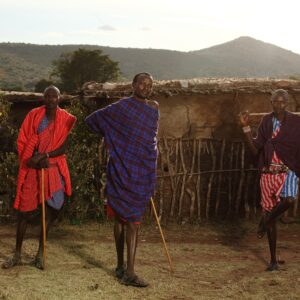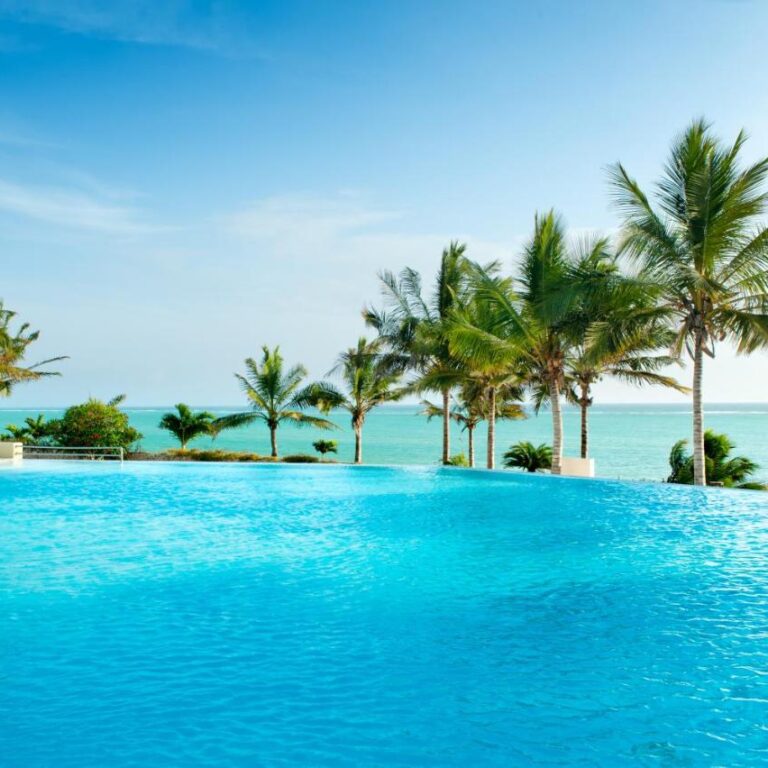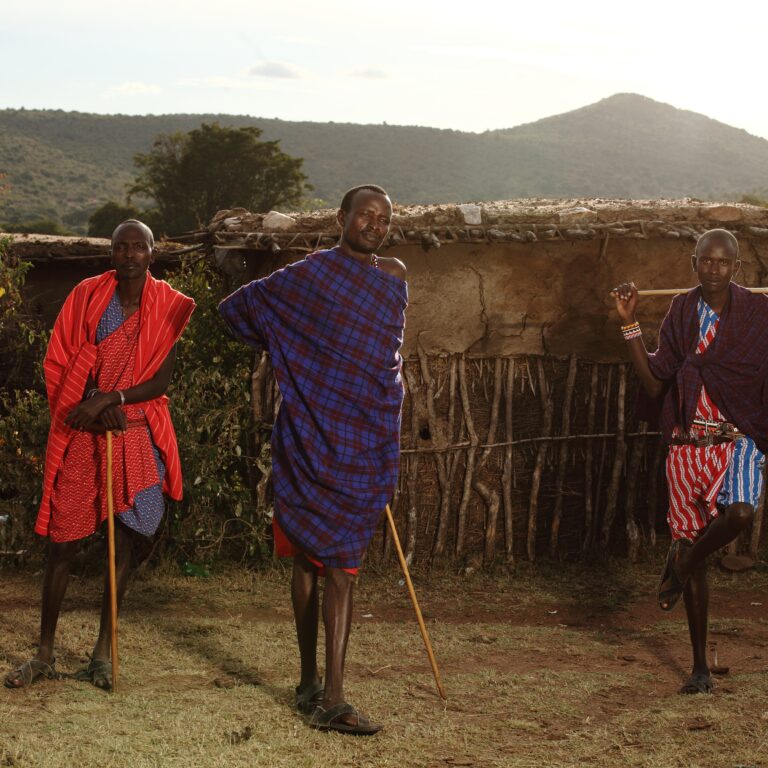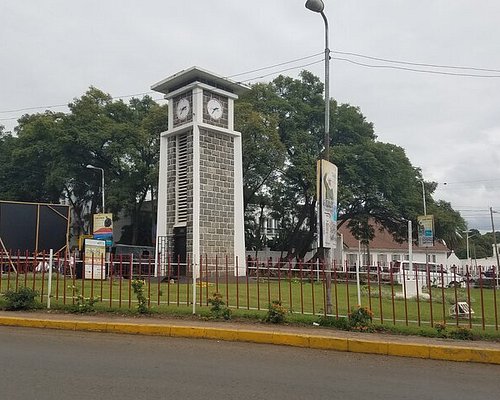Kilimanjaro Height & Altitude Gain When Climbing Kilimanjaro!
Mount Kilimanjaro is a dormant volcano located in Kilimanjaro Region of Tanzania. It has three volcanic cones: Kibo, Mawenzi, and Shira. The highest mountain in Africa and the highest single free-standing mountain above sea level in the world: 5,895 m (19,341 ft) above sea level and about 4,900 m (16,100 ft) above its plateau base. It is the highest volcano in Africa and the Eastern Hemisphere.
Kilimanjaro is the fourth most topographically prominent peak on Earth. It is part of Kilimanjaro National Park and is a major hiking and climbing destination. Because of its shrinking glaciers and ice fields, which are projected to disappear between 2025 and 2035, it has been the subject of many scientific studies.
Mount Kilimanjaro’s prominence is 4,900 meters (16,100 feet), which is an impressive feat. Altitude gain refers to the vertical distance gained during the climb. For most routes, Mount Kilimanjaro’s altitude gain is approximately 4,000 meters (13,000 feet).
What is the Height of Kilimanjaro?
Kilimanjaro’s summit, Uhuru Peak, proudly stands at an impressive 5,895 meters (19,341 feet) above sea level. This elevation places it as the highest point on the African continent, enticing climbers from around the world to test their mettle against its slopes. For those who prefer feet, that’s approximately 19,431 feet.
Prominence: Kilimanjaro’s prominence is about 4,900 meters (16,100 feet). This means that the base of the mountain is around 1,000 meters above sea level, and Kilimanjaro itself rises about 4,900 meters from its plateau base.
Altitudes of Kilimanjaro’s Three Cones
- Kilimanjaro isn’t just a single peak; it comprises three volcanic cones: Kibo, Mawenzi, and Shira. Each cone possesses unique characteristics and altitudes, adding to the allure of the climb.
- Kibo: The highest of the three, Kibo’s summit houses Uhuru Peak, standing at 5,895 meters (19,341 feet).
- Mawenzi: While not the tallest, Mawenzi’s technical climbs reach altitudes of approximately 5,149 meters (16,893 feet).
- Shira: The Shira cone, although eroded, still commands impressive altitudes around 3,962 meters (12,999 feet).
Kilimanjaro’s Position Among the Seven Summits:
Kilimanjaro ranks as the fourth highest of the Seven Summits, which are the tallest peaks on each continent. Despite not being part of a large snowy range, Kilimanjaro’s height surpasses any mountain in Europe. Climbing Kilimanjaro is a breathtaking endeavor, both literally and metaphorically. As Africa’s highest peak and the fourth highest of the Seven Summits, Kilimanjaro stands as an iconic challenge for adventurers seeking to conquer its towering heights. In this article, we delve into the dimensions of Kilimanjaro, exploring its altitude, prominence, elevation gains, and essential tips for a successful ascent.
Kilimanjaro’s Prominence
Prominence, a term often misunderstood, refers to the vertical rise of a mountain from its surrounding base, independent of sea level. Kilimanjaro’s prominence is around 4,900 meters (16,100 feet), highlighting its impressive rise from the surrounding plateau, even though it doesn’t rise directly from sea level.
Altitude Gain While Climbing Kilimanjaro
While Kilimanjaro is 5,895 m above sea level, you don’t of course climb all that elevation, since you don’t begin your climb at sea level. While the total height of Kilimanjaro is impressive, climbers don’t begin their journey at sea level. Most routes start within the forest zone, already at elevations ranging from 1,800 meters (5,900 feet) to 3,000 meters (9,800 feet). Thus, Height Gain When Climbing Kilimanjaro. the actual altitude gain during a climb, which refers to the vertical distance ascended, is typically around 4,000 meters (13,000 feet).
Altitude Gains of the Seven Kilimanjaro Routes
Kilimanjaro offers seven distinct routes, each with its own charm and difficulty level. Altitude gains vary, providing climbers with diverse experiences. The Machame Route, for example, spans approximately 4,879 meters (16,001 feet) in elevation gain. The different Kilimanjaro routes have varying starting points, leading to slight differences in altitude gain. Here’s an overview:
Lemosho Route: 4,600 meters (15,100 feet) gain
Machame Route: 4,800 meters (15,700 feet) gain
Marangu Route: 3,900 meters (12,800 feet) gain
Shira Route: 4,700 meters (15,400 feet) gain
Northern Circuit Route: 4,300 meters (14,100 feet) gain
Rongai Route: 4,400 meters (14,400 feet) gain
Umbwe Route: 4,800 meters (15,700 feet) gain
Trailhead Elevations of the Seven Kilimanjaro Routes
Understanding the starting elevations of Kilimanjaro’s routes is crucial for climbers. Ranging from around 1,800 meters (5,905 feet) for the Marangu Route to 2,850 meters (9,350 feet) for the Lemosho Route, each trailhead presents unique challenges and scenery. Understanding the starting elevation of each route provides context for the altitude gain:
Lemosho Route: 1,400 meters (4,600 feet)
Machame Route: 1,800 meters (5,900 feet)
Marangu Route: 1,800 meters (5,900 feet)
Shira Route: 2,600 meters (8,500 feet)
Northern Circuit Route: 2,700 meters (8,900 feet)
Rongai Route: 2,000 meters (6,600 feet)
Umbwe Route: 1,600 meters (5,200 feet)
Tips for Successful Kilimanjaro Elevation Gains
Ascending Kilimanjaro demands careful preparation. Tips for successful elevation gains include gradual acclimatization, proper hydration, and allowing ample time for the body to adjust to changing altitudes.
Gradual ascent and proper acclimatization are crucial for a safe and successful Kilimanjaro climb. Here are some tips:
Choose a route that aligns with your experience and fitness level.
Start your training well in advance, focusing on building endurance and strength.
Ascend slowly and allow your body time to adjust to the increasing altitude.
Descend to lower elevations regularly to aid acclimatization.
Stay hydrated and eat nutritious meals throughout the climb.
Elevation Vs. Ascent On Kilimanjaro
It’s important to understand the difference between “elevation” and “ascent” on Kilimanjaro. Elevation refers to the absolute height above sea level, while ascent refers to the vertical distance you travel. Height Gain When Climbing Kilimanjaro. While summiting Kilimanjaro involves reaching its highest elevation (5,895 meters), the total ascent depends on the chosen route’s starting point and profile.
Kilimanjaro vs. Everest Base Camp Elevation Gain:
Kilimanjaro’s ascent is more gradual, making it accessible to trekkers.
Everest Base Camp involves a steeper ascent and higher altitudes, demanding more acclimatization. In summary, Kilimanjaro’s grandeur, unique routes, and diverse landscapes make it an unforgettable adventure. Whether you choose the lush Lemosho or the bustling Machame, the journey to Uhuru Peak promises awe-inspiring moments and a sense of achievement. So lace up your boots, breathe in the crisp mountain air, and embark on this remarkable climb!
What is the altitude gain of climbing Kilimanjaro?
Be mindful, though, that most of the trip starts higher, at the Lemosho glades at 11,500 f (3,500 m). This is done to ensure a smooth acclimatization transition. Thus, when choosing a Lemosho or Northern Circuit route for your Kilimanjaro hike, your total elevation gain will be 2,395 meters or 7,840 feet only.
What is the prominence of Mt Kilimanjaro?
The prominence of Kilimanjaro is about 4,900 m (16,100 ft). What this means is that the base of Kilimanjaro is around 1,000 m above sea level, and Kilimanjaro itself rises about 4,900 m from its plateau base.
What is the elevation change on Kilimanjaro?
Summit: Uhuru Peak 5,896 m/19,344 ft. Elevation gain: 1,080 m/3,544 ft. Start: Kosovo Camp 4,815 m/15,800 ft.
What is the elevation gain of the Lemosho route Kilimanjaro?
The Lemosho route is approximately 70 km/ 42 miles from gate to gate, with an elevation gain of about 16,000 to 17,000 feet. Explore The Magnitude Of Kilimanjaro Height – Mount Kilimanjaro stands at a height of 5,895 meters (19,341 feet) above sea level. Its African continent’s highest peak and the fourth highest of the seven summits.
Do you need altitude training for Kilimanjaro?
Climbing Kilimanjaro is a physical challenge. Many people underestimate the fitness required for this mountain. (Or say they would have enjoyed the trip more had they been in better shape.) Height Gain When Climbing Kilimanjaro. Simulated altitude training will not only help you get in shape for the climb, but also prepare you for the altitude.
Where does Kilimanjaro hike start?
A Mount Kilimanjaro hike will typically set off from one of two towns: Arusha, to the south west of the mountain, and Moshi, directly south. It takes around an hour to reach Moshi and 80 minutes to reach Arusha.
Where is the base camp for Kilimanjaro?
Mt Kilimanjaro has three base camps or high camps: Barafu Camp (4,670 meters): Barafu base camp is used by the hikers on the Lemosho, Machame and Umbwe routes. It follows a zigzag route up the slopes of Kibo to the sub-summit, Stella Point (5,739 meters).
What is the weather like at the base camp of Kilimanjaro?
At the base of Mount Kilimanjaro where the the climb starts, the average temperature is around 70 to 80 degrees Fahrenheit (21 to 27 degrees Celsius).








